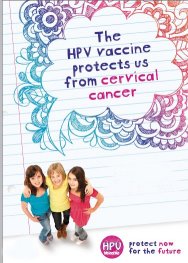Is prenatal care important?
Prenatal care is very important. To help make sure that you and your baby will be as healthy as possible, follow some simple guidelines and check in regularly with your doctor.What will happen during prenatal visits?
After you find out you are pregnant, you should make an appointment with your doctor. Your first prenatal visit will likely be when you are 6 to 8 weeks pregnant. Your doctor will probably start by talking to you about your medical history and how you've been feeling. You'll be weighed and have your blood pressure taken. These measurements will most likely be taken during each doctor's visit.On your first visit, you'll also have a pelvic exam to check the size and shape of your uterus (womb) and a Pap smear to check for abnormalities of the cervix (the opening of the uterus).
Urine and blood tests samples will be taken on the first visit and again at later visits. Other tests are performed, such as urine tests to check for bacteria in your urine, high sugar levels (which can be a sign of diabetes) and high protein levels (which can put you at risk for preeclampsia, a type of high blood pressure during pregnancy). Blood tests to check for low iron levels (anemia), blood cell count, infectious diseases (such as syphilis and hepatitis) and blood type are also performed.
Sometimes, an ultrasound may be done to help figure out when your baby is due or to check on your baby's growth and position in your uterus. An ultrasound uses sound waves to create an image of your baby on a video screen.
Other tests may be needed if you or your baby are at risk for any problems.
How much weight should I gain during pregnancy?
Talk to your doctor about how much weight you should gain. It's different for everyone, but most women gain about 25 to 30 pounds. If you don't weigh enough when you get pregnant, you may need to gain more. If you're overweight when you get pregnant, you may need to gain less.What should I eat?
Eating a balanced diet is one of the most important things you can do for yourself and your baby. There are a few foods that you should be more careful about eating while you are pregnant. Meat, eggs and fish that are not fully cooked could put you at risk for an infection. Do not eat more than 2 or 3 servings of fish per week (including canned fish). Do not eat shark, swordfish, king mackerel or tilefish. These fish sometimes have high levels of mercury, which could hurt your baby. If you eat tuna, make sure it is light tuna and eat no more than 6 ounces per week of albacore tuna and tuna steaks. It is safe to have 12 ounces per week of canned light tuna.Wash all fruit and vegetables. Keep cutting boards and dishes clean. Eat 4 or more servings of dairy foods each day. This will give you enough calcium for you and your baby. Do not drink unpasteurized milk or eat unpasteurized milk products. Soft cheeses such as Brie, feta, Camembert, blue cheese and Mexican-style cheeses such as queso fresco may have bacteria that can cause infections.
If you drink coffee or other drinks with caffeine, do not have more than 1 or 2 cups each day.
It is okay to use artificial sweeteners such as aspartame (some brand names: Equal, NutraSweet) and sucralose (brand name: Splenda) while you are pregnant, but you should use them in moderation. If you have a genetic disease called phenylketonuria, or PKU, you shouldn't use aspartame at all.
Should I take vitamins?
You should take 1,000 mcg (1 mg) of folic acid every day during your pregnancy. Folic acid can help prevent problems with your baby's brain and spinal cord. It is best to start taking folic acid before you get pregnant.Your doctor might want you to take a prenatal vitamin. If you do take a prenatal supplement, make sure you're not taking any other vitamin or mineral supplement along with it unless your doctor recommends it.
Is it okay to take medicine?
Check with your doctor before taking any medicine, including pain relievers or other over-the-counter medicines. Even medicine you can buy without a prescription may cause birth defects, especially if it's taken during the first 3 months of pregnancy.How long can I keep working?
This depends on whether you have any problems with your pregnancy, what kind of work you do and if you're exposed to anything at work that could harm your baby. For instance, lifting heavy objects or standing for long periods can be hard on your body. Radiation, lead and other heavy metals, such as copper and mercury, could be damaging to the baby. However, working in front of a computer screen is not thought to cause harm to an unborn baby. Talk with your doctor about your work environment.What about exercise?
Unless you have problems in your pregnancy, you can probably do whatever exercise you did before you got pregnant. Exercise can help ease discomfort during pregnancy. Try to get at least 30 minutes of exercise each day. Talk to your doctor about any special conditions that you may have.Some women say exercising during pregnancy makes labor and delivery easier. Walking and swimming are great choices. If you didn't exercise before pregnancy, start slowly. Don't overdo exercise. Listen to your body. Call your doctor if you have symptoms such as blurred vision, dizziness, chest pain or abdominal pain while you are exercising. Don't get overheated. Be sure to drink plenty of water so that you don't get dehydrated. It's best to avoid anything that could cause you to fall, such as water skiing or rock climbing. It's also best to avoid contact sports such as basketball or soccer.
Is it okay to have sex?
Yes, unless your doctor believes you're at risk for problems. Don't be surprised if you're less or more interested in sex while you are pregnant. As you get larger, you may find you need to try different positions, such as lying on your side or being on top. If you have oral sex, tell your partner not to blow air into your vagina. This could force air inside you, which could cause an air embolism. Air embolisms can cause permanent brain damage and even death to a pregnant woman and her baby.What can I do to feel better?
Here are the most common discomforts of pregnancy and some tips for handling them:Morning sickness. Nausea or vomiting may strike anytime during the day (or night). Try eating frequent, small meals and avoid greasy foods. Keep crackers by your bed to eat before getting up.
Talk to your doctor if morning sickness lasts past the first 3 months of pregnancy or causes you to lose weight.
Tiredness. Sometimes tiredness in pregnancy is caused by anemia, so tell your doctor. Get enough rest. Take a daytime nap if possible.
Leg cramps. Gently stretch the calf of your leg by curling your toes upward, toward your knee.
Constipation. Drink plenty of fluids. Eat foods with lots of fiber, such as fruits, vegetables and bran cereal. Don't take laxatives without talking to your doctor first. Stool softeners may be safer than laxatives.
Hemorrhoids. Don't strain during bowel movements. Try to avoid becoming constipated. Clean yourself well after a bowel movement (wet wipes may be less irritating than toilet paper). Take several warm soaks (sitz baths) a day if necessary.
Urinating more often. You may need to urinate more often as your baby grows because he or she will put pressure on your bladder. This can't be helped.
Varicose veins. Avoid clothing that fits tightly around your legs or waist. Rest and put your feet up as much as you can. Move around if you must stand for long periods. Ask your doctor about support or compression hose, which may help ease or prevent varicose veins.
Moodiness. Your hormones are on a roller coaster ride during pregnancy. Plus, your life is undergoing a big change. Don't be too hard on yourself. If you feel very sad or think about suicide, talk to your doctor.
Heartburn. Eat frequent, small meals. Avoid spicy or greasy foods. Don't lie down right after eating. Ask your doctor about taking antacids.
Yeast infections. The amount of discharge from the vagina increases during pregnancy. Yeast infections, which can also cause discharge, are more common during pregnancy. It's a good idea to talk with your doctor about any unusual discharge.
Bleeding gums. Brush and floss regularly, and see your dentist for cleanings. Don't put off dental visits because you're pregnant, but be sure to tell your dentist you're pregnant.
Stuffy nose. This is related to changes in the levels of the female hormone estrogen. You may also have nosebleeds.
Edema (retaining fluid). Rest with your legs up. Lie on your left side while sleeping so blood flows from your legs back to your heart better. Don't use diuretics (water pills). If you're thinking about cutting down on salt to reduce swelling, talk with your doctor first. Your body needs enough salt to maintain the balance of fluid and cutting back on salt may not be the best way to manage your swelling.
Skin changes. Stretch marks appear as red marks on your skin. Lotion with shea butter can help keep your skin moist and may help reduce the itchiness of dry skin. Stretch marks often can't be prevented, but they often fade after pregnancy.
Other skin changes may include darkening of the skin on your face and around your nipples, and a dark line below your belly button. Staying out of the sun or using a sunscreen may help lessen these marks. Most marks will probably fade after pregnancy.
Call your doctor if you have:
- Blood or fluid coming from your vagina
- Sudden or extreme swelling of your face or fingers
- Headaches that are severe or won't go away
- Nausea and vomiting that won't go away
- Dizziness
- Dim or blurry vision
- Pain or cramps in your lower abdomen
- Chills or fever
- A change in your baby's movements
- Less urine or burning when you urinate
- Any illness or infection
- Anything that bothers you
Warnings
"Don't do this, don't do that." You've probably heard every old wives' tale. Here are some warnings worth heeding:- Don't smoke. Smoking raises your risk for miscarriage, premature birth, low birth weight and many other problems.
- Don't use drugs. Cocaine, heroin, marijuana and other drugs increase your risk of miscarriage, premature birth and birth defects. Your baby could also be born addicted to the drug you've been abusing, which can cause serious health problems.
- Don't drink alcohol. Drinking alcohol during pregnancy is the major cause of preventable birth defects, including fetal alcohol syndrome.
- Don't clean your cat's litter box or eat raw or undercooked red meat. You could get toxoplasmosis, a disease that can cause birth defects.
- Don't sit in a sauna or hot tub. The high heat raises your risk of miscarriage and birth defects.
- Don't douche. Douching could force air into the vagina, which can cause an air embolism. The vagina doesn't require cleansing in addition to normal bathing. Douching disrupts the helpful bacteria that keep the vagina clean.


 HPV is a virus that causes Cervical Cancer.
HPV is a virus that causes Cervical Cancer.














